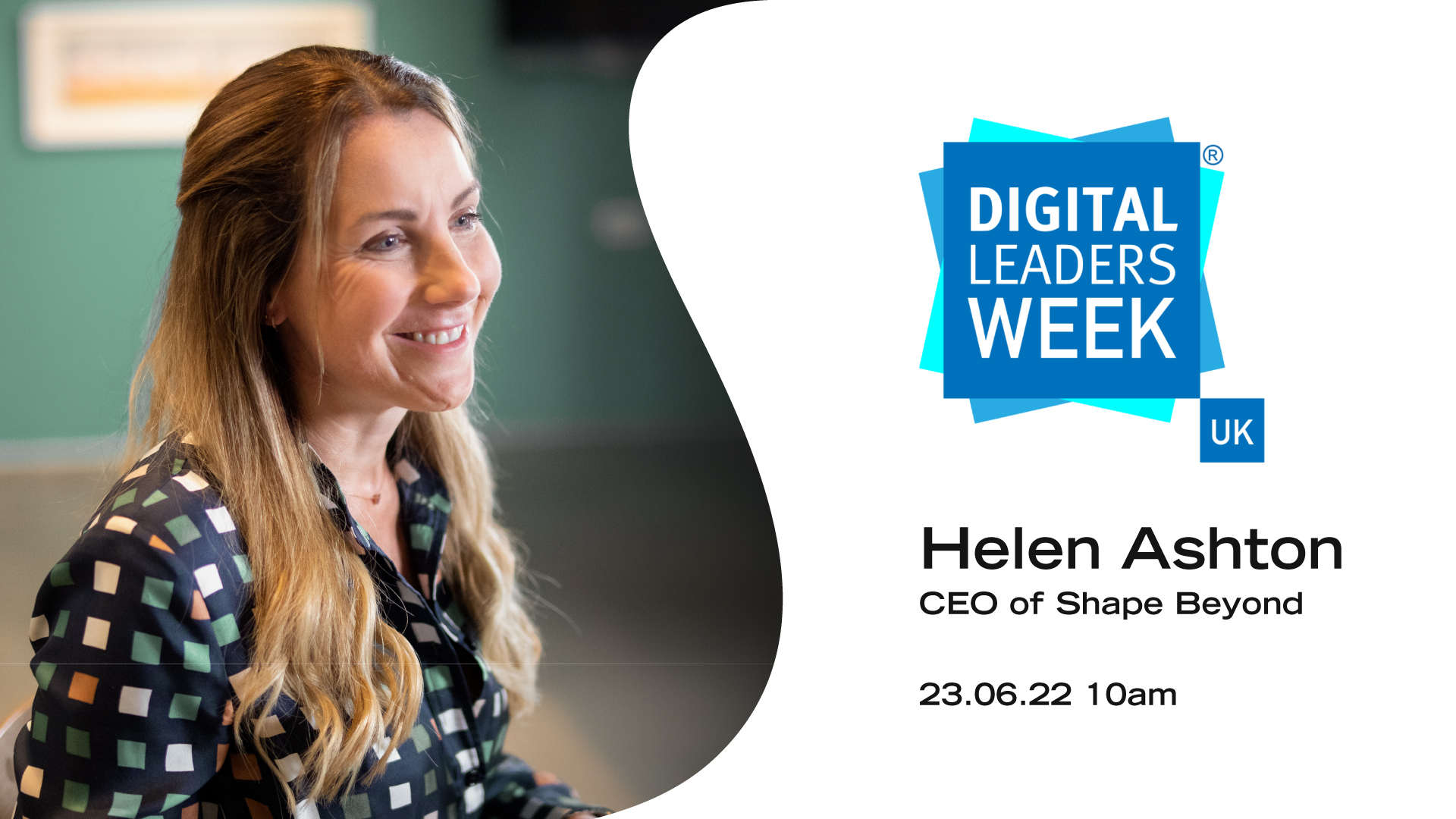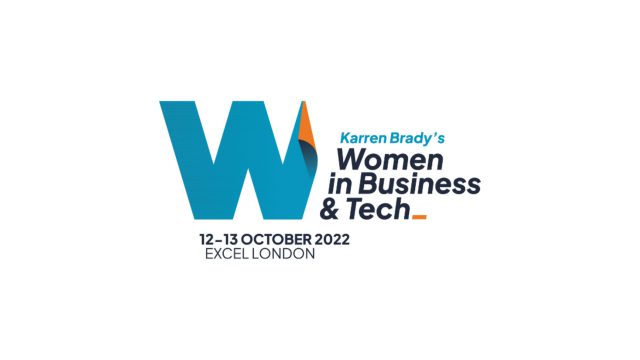
Becoming a Digital Leader
This week I was lucky enough to be featured as a part of the Digital Leaders Week along with some amazing speakers.
In my talk – Digital transformation is more than digital and tech. People and culture are what make it happen. – I presented my reasoning as to why people and culture are the keys to any transformational project.
In my experience, every business is looking to transform in one way or another and the success of any change is directly proportional to how engaged and willing the people in the organisation are to embrace the change. It’s as simple as that.
If you neglect people and culture, you neglect the potential success of your business.
Unprecedented change.
In all of my experience in business, I have never seen anything like the pace of change that businesses are having to navigate at the moment. The economic and political landscape is fraught with challenges. Supply chains are creaking at the seams. Generational shifts are profound and COVID has changed people’s perception of life more generally.
Today’s world is more ‘meta’, the pandemic only fueled accelerated changes in technology with AR and VR being used by brands more than ever. Whether it’s seeing brands integrate this technology into gaming and social media or hearing it in nearly every conversation I have, the world really does seem like it’s moving to the metaverse.
Along with new technology comes an increasing discrepancy between generations. Now I’m from Gen X, the generation that valued the corner office, the leather chair and generally accepted that it was necessary to sell your soul for the image of success. Today’s generation, Millennials and Gen Z are the first to have the internet as an integral part of everyday life, growing up against the backdrop of social and climate upheaval They account for one-third of the world’s population and have the fastest-growing disposable income ($33 trillion)…brands ignore them at your peril.
Therefore, as a business, understanding your customer demographic is crucial. For example, sustainability gained traction throughout the pandemic and companies must embrace it authentically to engage both their people and their customers. New phrases like “greenwashing” are arising another company risk if not navigated well.
In my view, the reality is that consumers aren’t binary. They want choice. They want to be able to do whatever they want to do when they want to do it depending on how they feel at any particular moment, and for a business to be able to serve customers in this way then there is only one key to success and that is: having the agility to be able to flex and shift to meet the needs of customers before they even realise what they want themselves.
Businesses will only survive if they are agile.
If you have an analytical background then you will recognise that one of the strongest indicators of future behaviour is past behaviour. When I worked in financial services, one of the key indicators of someone’s ability to repay a loan was their past payment behaviour.
However unfortunately this doesn’t hold true in relation to past and future business performance. Think about the most successful retail businesses in the UK from ten to fifteen years ago. I’m thinking Marks and Spencer, Debenhams, House of Fraser, Arcadia Group, HMV, Blockbuster, Dixons and Argos.
Now think of where those businesses are now. And why. Arcadia is a really interesting one. When I joined ASOS, the brand that we desperately wanted on the site was Topshop, part of the Arcadia group. And yet Topshop absolutely did not want to sell their product on an online platform. Only a short number of years later, ASOS bought the Topshop brand (along with Miss Selfridge) for £330m, leaving all of the stores behind and just taking the brand name and design teams. Why did this happen? A large part was that Arcadia missed the changing behaviour of their customers and didn’t have the agility to pivot their business model to deliver on what the customer actually wanted versus what they thought the customer wanted.
It isn’t enough to think you are agile.
Every business I speak to believes that they are agile. However, like everything agility is relative. Let me give you an example of this. When I was at ASOS I was chatting to another CFO of a large retailer where we discussed their decision to launch click and collect. ASOS decisions were supported by analytical insight, made in minutes and implemented within days. Because what was the worst that happened if we cocked up? We could always reverse it. In this other business, the same decision took 6 months. Focused on optimising profit rather than what worked best for the customer.
So if agility is so crucial, how do we know where we are relative to others in terms of agility?
You need to think in terms of an internal agility index. Meaning those businesses at the higher end of the index will possess some of the following qualities:
- They will have a clear purpose that focuses the whole organisation
- They will have devolved accountability to get on and deliver against the purpose
- Leadership is there to allocate resources, then get out of the way to let their teams fly
- They will be organised around products that serve the customer
- They are obsessed with understanding the customer
- They will balance decision-making between analytical insight and gut feel
- Their people will self-learn, fail fast and continually improve in a bid to deliver the purpose every minute of the day
Whereas a company on the lower end of the index will have an unclear purpose, an outdated hierarchical structure will deliver what they believe their customer wants rather than what they actually want, will be slow at making decisions and will be fearful of mistakes.
Research also supports this theory that businesses on the higher end of the index are more successful. McKinsey reported organisations that undergo agile digital transformations, see their speed of decision-making increase by five to ten times, their employment engagement increase by 30% and their customer satisfaction also increase by 30%.
It seems that in today’s world, agility is the key to success. But what is the key to agility?
Culture is the key ingredient for agility.
For me, there are three key ingredients for agility. These are agile data, agile technology and, most importantly, an agile culture. Agile data and technology are often the first things people look at when beginning a transformational project.
So what do we mean by agile data? By this, I mean data that is nurtured, cared for and is easily accessible to be used in ways that can further drive purpose and understanding of the customer. This sounds straight forward but anyone who has been involved in data warehouse, data lake or data spine projects will know that this is not for the faint-hearted. There is little point in spending money on the best analytics skills if it takes them 90% of their time to retrieve and clean the data that they are going to use.
And agile tech for me means a shift away from legacy spaghetti, which is difficult to develop and unstable, to technology platformed within the cloud to provide resilience, power and bandwidth using a microservices architecture that can be developed in a modular fashion at pace as and when required.
So why does culture trump these two components? Well, that’s because agile tech and agile data are multipliers to culture. That is because without fully developing your company’s culture, people and purpose, any new fancy technology you employ won’t be utilised to its full potential.
When a company has a clear culture and purpose, this transcends right down to the customer. ASOS was like nowhere I had ever worked before. Everything was laser-focused on the customer. We knew who our customers were, fashion-loving 20-somethings, so we based our entire culture around this. We made sure that the average age of the workforce was in their 20s, allowed employees to have accountability treated interns with the same degree of respect as the exec suite. People were rewarded not just for delivering at pace but also for living the ASOS values – which were embedded in the day-to-day – I can clearly remember the values now – Authentic – Brave – Creative – Disciplined.
So, to be clear, you can have agile data or agile tech but if you haven’t got an agile culture you will not have an agile business. You can have an agile culture without agile data or tech and it will still be relatively agile. It just becomes more so with the other two multipliers. And this is why so often in transformation programmes involving say a system integration, that adoption once completed and benefits delivered are patchy. A new system is only valuable if it is built on adaptive processes and is embraced into the culture and the way we do things around here.
What does this mean for you?
Whenever we speak to a new business, they will tend to mention digital transformation within the first couple of minutes. And one of our first questions will be what do you mean by digital transformation? This usually gets the same response as what do you mean by the IOT?
After being involved in many transformational programmes, I have learnt that focusing on quick wins whilst having a longer-term vision, is the best approach to delivering value and creating momentum. It also creates followers and confidence which are key in a change programme.
Below are some takeaways from today’s session:
Understand the purpose of your organisation.
Why do customers keep coming back? Why do colleagues keep coming to work every day? The answer isn’t to be paid. It is much more emotional than that. But once you are clear, it forms the guide rails for your teams to get on with driving towards that purpose.
Examine how devolved accountability is in your business.
People who are closest to the customer need to be given the accountability to get on and do what they need to drive customer satisfaction.
Look to automate, in whatever way you can, manual hand-offs.
You will be amazed by how much time and energy it saves. And this is all time that can be focused on driving customer satisfaction. Dave Brailsford talks about marginal gains and the value from them and his advice works equally well in organisations as it does in elite cycling.
Think twice before building a data lake.
It is an endless project which is notoriously difficult to finish or get value from quickly. Instead in my experience understand the commercial challenges that you are hoping to solve and build out the data you need to solve that one problem, structure that data within a spine and then build on that for the next problem.
Needing help with your transformation project?
I hope you have found this article useful and enjoyed my talk – if you haven’t seen it yet, the link is at the top of the page. And if your organisation needs help with a digital transformation then do get in touch.
Further reading you may find useful:
Business transformation – is it not the silver bullet to company success?
Why do so many transformational programmes fail?
Building an agile organisation to survive in a never normal world
Similar posts

The Skills of a Highly Effective CFO
CFO webinar organised by AccountancyAge and Oracle NetSuite, covering how the role of the CFO has evolved in recent years and what skills are needed for CFOs today.
Read more
Speaking at Karren Brady’s Women in Business & Tech Exhibition
Helen Ashton offers insights into what it's like to be a female leader in today's never normal world, and why we need to drop labels like 'girl boss'
Read more